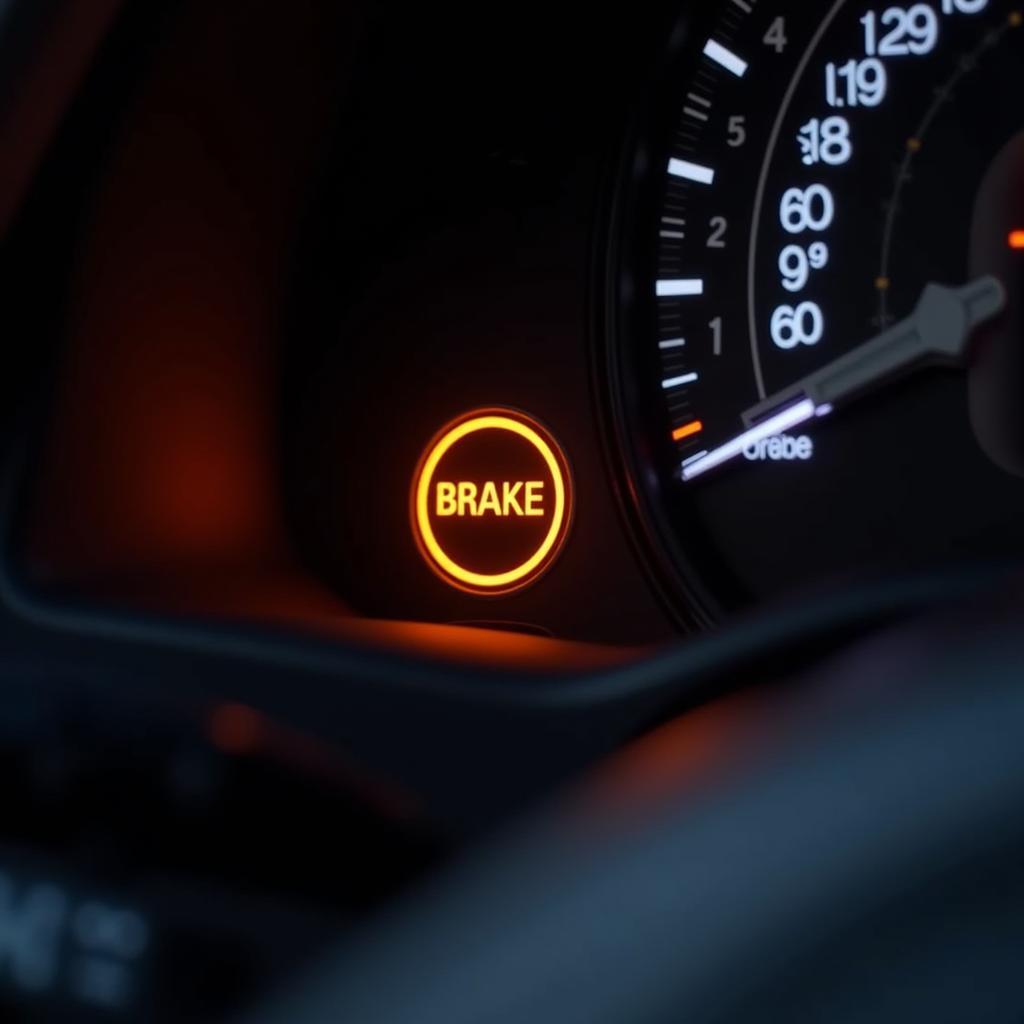The “AdBlue” warning light on your 2015 Golf TDI can be a frustrating experience. This article will help you understand what causes the AdBlue warning light, common solutions, and how to reset the warning. You’ll also learn how to prevent this issue in the future.
Understanding the AdBlue System
AdBlue is a diesel exhaust fluid (DEF) that is used in modern diesel vehicles to reduce harmful nitrogen oxides (NOx) emissions. The AdBlue system works by injecting a small amount of AdBlue into the exhaust stream, where it reacts with NOx to convert it into harmless nitrogen and water. If the AdBlue system is malfunctioning, the car will trigger a warning light.
What Causes the AdBlue Warning Light on a 2015 Golf TDI?
Several factors can trigger the AdBlue warning light on your 2015 Golf TDI. Here are the most common causes:
- Low AdBlue Level: This is the most common reason for the warning light. When the AdBlue tank is running low, the system will alert you to refill it.
- AdBlue Sensor Malfunction: The sensor that monitors the AdBlue level might be faulty, triggering a false warning.
- Clogged AdBlue Injector: The injector that delivers the AdBlue into the exhaust system can become clogged, preventing it from functioning correctly.
- AdBlue Pump Failure: The pump responsible for transferring AdBlue from the tank to the injector might fail, leading to an AdBlue warning.
- Software Issues: Sometimes, the vehicle’s software might need to be updated or reset to resolve AdBlue-related issues.
How to Troubleshoot the AdBlue Warning Light
Here’s a step-by-step guide to troubleshoot the AdBlue warning light on your 2015 Golf TDI:
- Check the AdBlue Level: Open the hood of your car and locate the AdBlue tank. If the level is low, simply refill the tank with fresh AdBlue.
- Inspect the AdBlue Sensor: The AdBlue sensor is usually located near the AdBlue tank. Inspect it for any visible damage or corrosion. If you suspect a faulty sensor, you’ll likely need to replace it.
- Verify the AdBlue Injector: If the AdBlue injector is clogged, it can be cleaned. However, in some cases, it might need to be replaced.
- Test the AdBlue Pump: The AdBlue pump can be tested by checking for any signs of leaks or unusual noises. If the pump isn’t working properly, it will need to be replaced.
Resetting the AdBlue Warning Light
Once you’ve addressed the underlying issue, you’ll need to reset the AdBlue warning light. Here’s how:
- Refill the AdBlue Tank: Make sure the AdBlue tank is full.
- Turn the Ignition Key to the ON Position: Do not start the engine.
- Press and Hold the Gas Pedal: Hold the gas pedal down for about 10 seconds.
- Release the Gas Pedal: The warning light should reset after a few seconds.
Note: If the warning light doesn’t reset, or if you’re unsure about any of these steps, it’s best to consult a qualified technician.
Expert Insight
“It’s important to address AdBlue warning lights promptly,” says [Expert Name], a certified automotive technician. “Ignoring the issue can lead to more serious problems, potentially impacting the vehicle’s performance and causing significant damage.”
How to Prevent Future AdBlue Issues
Here are some tips for preventing future AdBlue issues:
- Use High-Quality AdBlue: Always use AdBlue that meets the specifications of your vehicle.
- Check the AdBlue Level Regularly: Don’t wait for the warning light to come on. Check the AdBlue level at least once a month.
- Avoid Using Old AdBlue: Old AdBlue can become contaminated, leading to problems.
- Service Your Vehicle Regularly: Follow the recommended maintenance schedule for your vehicle.
FAQ
- Q: What happens if I ignore the AdBlue warning light?
- A: Ignoring the AdBlue warning light can result in the vehicle going into “limp mode,” limiting its power and speed. In severe cases, it can also cause damage to the emissions system.
- Q: Is it safe to use AdBlue from different brands?
- A: While AdBlue from different brands is generally compatible, it’s always best to check the vehicle’s owner’s manual for specific recommendations.
- Q: How much does it cost to refill the AdBlue tank?
- A: The cost of AdBlue varies depending on the retailer and location, but it’s typically less expensive than gasoline or diesel fuel.
- Q: Can I add AdBlue myself?
- A: Yes, you can add AdBlue yourself. It’s a simple process that can be done at home. Just make sure to use the correct type of AdBlue and avoid spilling it on your vehicle’s paint.
- Q: Can I add AdBlue to the diesel fuel tank?
- A: No, never add AdBlue to the diesel fuel tank. This will cause severe damage to your engine.
- Q: How often should I refill the AdBlue tank?
- A: The frequency of AdBlue refills depends on your driving habits. However, most vehicles have a range of 6,000-10,000 miles between refills.
By understanding the AdBlue system and following these tips, you can keep your 2015 Golf TDI running smoothly and avoid any unnecessary problems. If you’re still experiencing issues, don’t hesitate to seek professional assistance.

